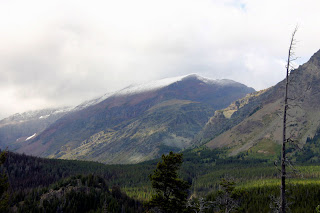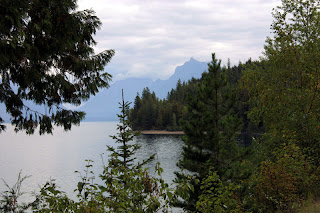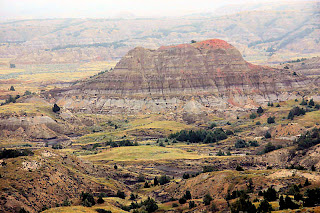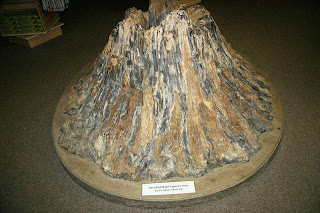 Moving on from Theodore Roosevelt National Park we traveled back on I-94 still moving westward toward Montana until we came to a town called Beach just a few hundred yards from the Montana border. Once there we decided to stop and have a latte and a chai tea at a local espresso cafe where we found a local who told us that we might really enjoy the route to Glacier that the National Park Ranger had told us about while we were in Theodore Roosevelt National Park.
Moving on from Theodore Roosevelt National Park we traveled back on I-94 still moving westward toward Montana until we came to a town called Beach just a few hundred yards from the Montana border. Once there we decided to stop and have a latte and a chai tea at a local espresso cafe where we found a local who told us that we might really enjoy the route to Glacier that the National Park Ranger had told us about while we were in Theodore Roosevelt National Park.As it turned out, this was a wonderfully pretty way to go north on highway 16 from Beach up to a town called Sidney which was just across the North Dakota border into Montana. This involved taking highway 68 west from 16 and then catching back up to highway 16 which ran into highway 2. At that point we drove on some of the most untraveled roads I have seen in a while. Most the the traffic (if you could really call it that) seemed to be trucks who seemed to be involved in the oil pipeline construction that was going on in that area.
This highway 2 was within 10 miles of the Canadian border of both Saskatchewan and Alberta (further west). We stopped in Glasgow, Montana for the night after a long day of driving.
The next morning we were up and off on our westward adventure to Glacier National park, but I did stop several times along the way because of some really pretty shots taken as we were going in and out of some thunderstorms which only helped the scenic ride. We made our way along miles and miles that all seemed to be either in or around Native American reservations like Peck Indian Reservation, Belknap Indian Reservation and Rocky Boy Indian Reservation.
The towns around the highway were very small and we were glad that we had picked Glasgow as the place we spent the previous night instead of trying to get closer to Glacier and have a shorter drive this morning.
By the time we made our way through Montana and got to Browning, we decided to go on into the East Glacier Park entrance to the park (at Two Medicine) and drove around to the Apgar Visitor Center and stopped to find out about the park and the best way for us to see it over the next couple of days. While we were there we saw Lake McDonald which was getting a strong wind through that area at that time. At that time we found out that there is a Canadian National Park that is actually attached to Glacier National Park The name of that park is Waterton Lakes National Park. It is in British Columbia.
The south part of Glacier National Park borders on Flathead National Forest, Great Bear Wilderness Area and Lewis and Clark National Forest.
It seems useless to try and describe the beauty of this national park and I am sure that the photos I took of this place can't do it justice either, but I sure took a lot of shots there. I think it has now moved to number one on my list of National Parks now.
"There is no voice in all of the world so insistent to me as the wordless call of these mountains. I shall go back. Those who go once always hope to go back. The lure of the great free spaces is in their blood."~ Mary Roberts Rinehart, American Playwright, describing Glacier National Park, 1925







































